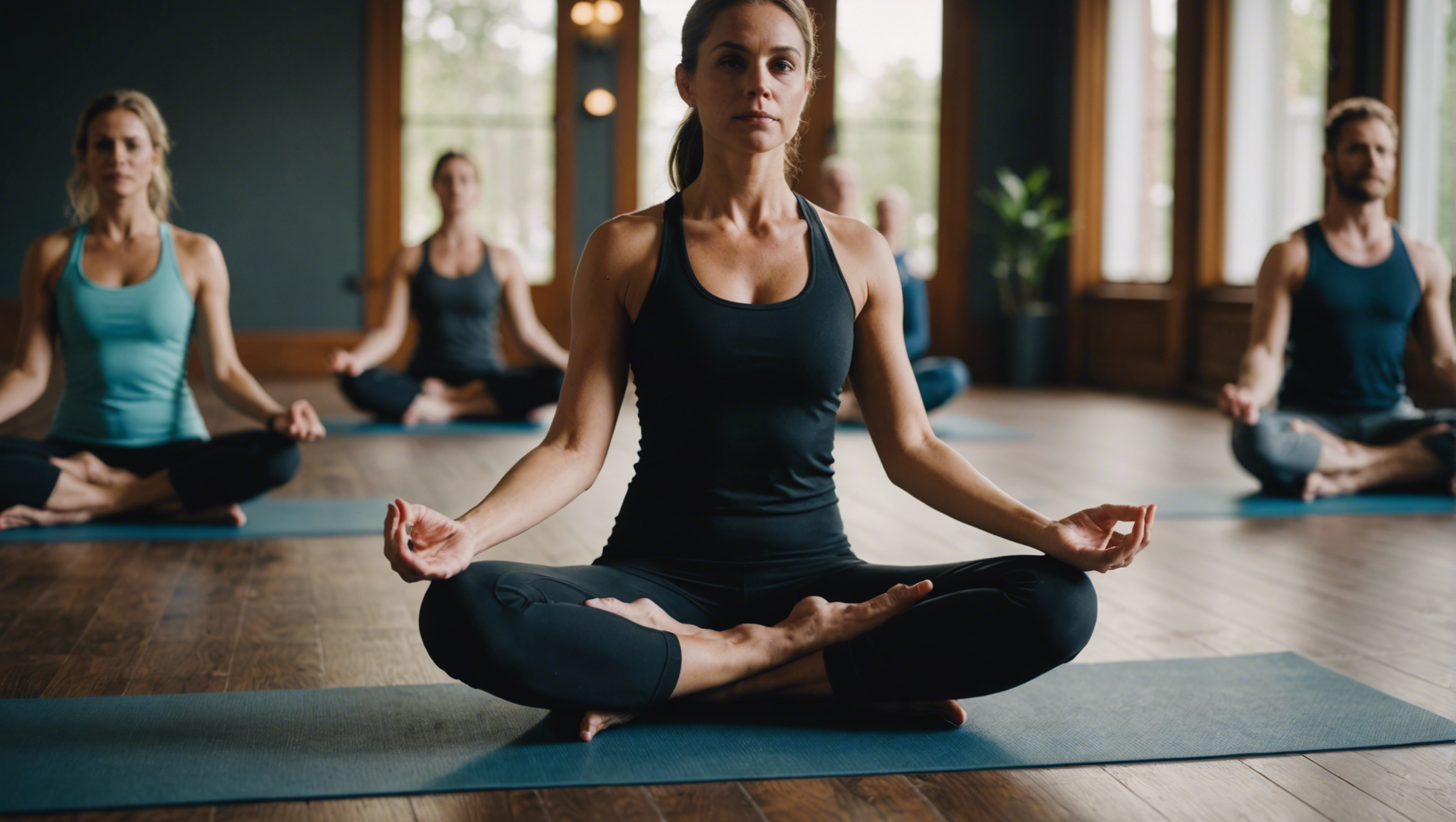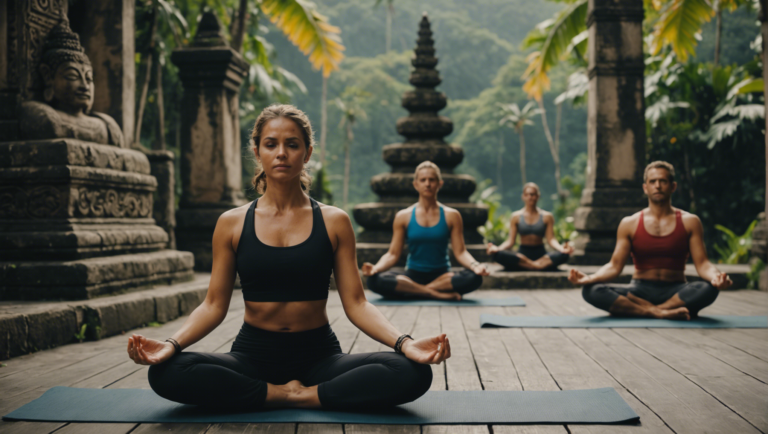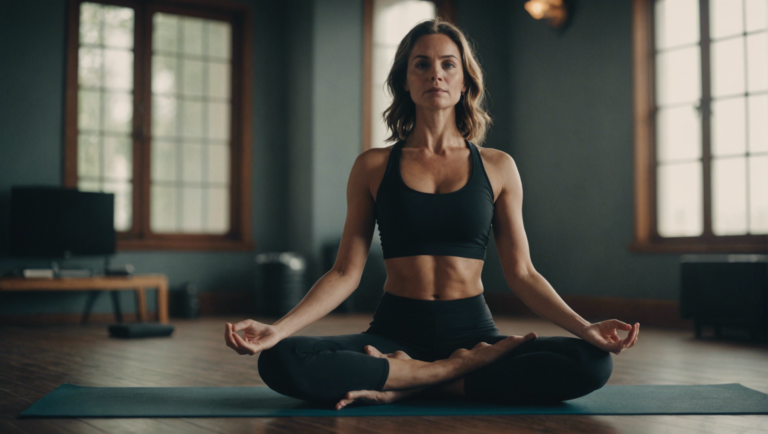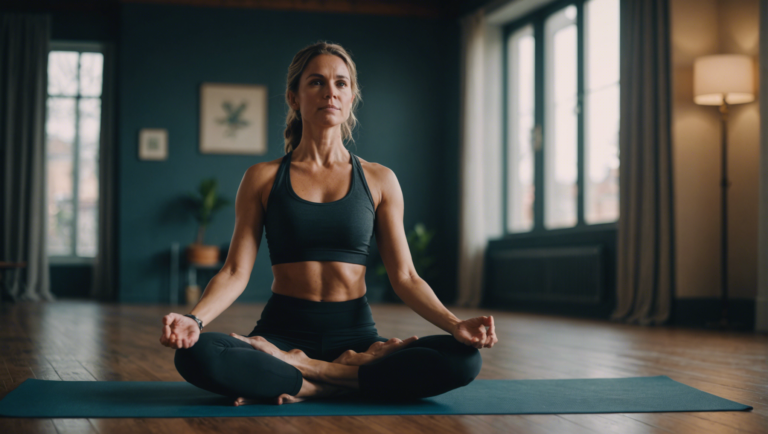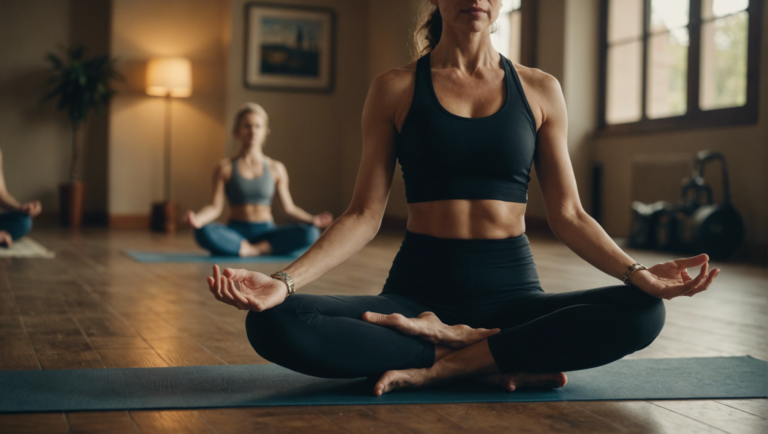How Many Yoga Classes Should You Attend In A Week?
Deciphering the Optimal Frequency of Yoga Classes for Your Wellness Journey
Embarking on a wellness journey involves numerous factors, from nutrition to mental health, but finding the right balance in physical activities like yoga can significantly impact your overall wellbeing. Understanding the frequency at which you should attend yoga classes is paramount in crafting a routine that fosters both physical and mental strength, flexibility, and serenity. This deliberation draws upon the fundamentals of personal goals, current fitness levels, and lifestyle constraints, offering a tailored approach to wellness.
Tailoring Your Yoga Practice to Fit Your Goals
Determining the optimal frequency for yoga classes begins with understanding your objectives. Are you turning to yoga for its potential to enhance flexibility, or are you seeking the mental clarity and stress reduction it offers? For those primarily interested in the physical benefits, such as increased strength and flexibility, participating in yoga classes three to four times a week can be beneficial. This frequency allows for consistent practice, which is crucial for muscle memory and flexibility improvements.
Conversely, if your focus is on the mental wellness aspects, such as stress reduction and improving concentration, a daily practice, even if shorter in duration, can be immensely beneficial. even brief sessions of yoga into your daily routine can help cultivate a sense of calm and focus that permeates throughout your day.
Assessing Your Current Lifestyle and Fitness Level
It’s essential to evaluate your current fitness level and lifestyle commitments. Beginners or those with substantial lifestyle constraints might find that starting with one to two classes per week allows for a sustainable introduction to yoga. This approach not only helps in gradually building up physical endurance but also ensures that yoga becomes a non-negotiable, integrated part of your weekly routine.
For individuals with a moderate to high level of physical fitness, or those who already engage in other forms of physical activity, attending yoga classes more frequently can offer enhanced benefits without the risk of overexertion. For these individuals, blending yoga with other fitness routines provides a holistic approach to physical health, enhancing recovery, and ensuring a well-rounded regimen.
Listen to Your Body: The Key to Personalization
One of the most critical aspects of determining the right frequency for your yoga practice is to listen to your body. Yoga, at its core, promotes an awareness of self that transcends the physical postures. Paying attention to how your body and mind respond after each class is crucial. If you find yourself overly fatigued or experiencing diminished enthusiasm for practice, it might be a sign to decrease your frequency. Conversely, an uplift in energy levels and an increasing eagerness for the next class can indicate your readiness to embrace more sessions.
Flexibility in Practice: Adjusting as You Go
Adopting a flexible approach to your yoga practice is essential. Life’s unpredictability means that what works one month may not be feasible the next. As your fitness levels improve, your goals evolve, or as life events shift your available time, being open to re-evaluating and adjusting your yoga schedule is key. This adaptability ensures that yoga remains a beneficial and enjoyable part of your wellness journey, rather than a source of stress or obligation.
Creating a Sustainable Yoga Routine: Quality Over Quantity
Ultimately, the emphasis should always be on the quality of your practice rather than the quantity of classes. Fostering a deeper connection with your practice, focusing on the alignment and sensations in each posture, and truly being present can offer more profound benefits than the sheer number of classes attended. Engaging with yoga in a way that feels enriching, sustainable, and joyful is the cornerstone of a practice that supports your wellness journey for years to come.
Drawing upon your personal goals, listening to your body, and being flexible in your approach will guide you towards uncovering the optimal frequency of yoga classes for your unique path. Remember, this journey is your own—crafted by your hands, led by your heart, and walked at your pace.
Tailoring Your Yoga Routine: Considerations Beyond the Mat
Yoga is a holistic practice that transcends the boundaries of mere physical exercise, delving into the realms of mental clarity, emotional balance, and spiritual growth. While the essence of yoga is often captured within the confines of a mat, a truly transformative experience requires us to extend its principles into various facets of our lives. Tailoring your yoga routine involves not just the physical postures but also integrating yoga’s core philosophies beyond the practice sessions. This article guides you through pivotal considerations that enhance your journey, turning every moment into an opportunity for growth and mindfulness.
Exploring the Ethical Precepts of Yoga
Yoga is grounded in a set of ethical precepts known as the Yamas and Niyamas, which provide a moral compass to navigate through life. These principles, such as truthfulness (Satya), non-stealing (Asteya), and contentment (Santosha), encourage practitioners to lead lives of integrity, humility, and gratitude. Reflecting on these values in everyday decisions fosters a lifestyle that mirrors the authenticity and wisdom of yoga. By embodying these ethical precepts, one’s practice on the mat becomes a living expression of yoga’s transformative power.
Cultivating Mindfulness in Daily Activities
Mindfulness is the cornerstone of a fruitful yoga practice. However, its benefits are most profound when integrated into daily routines. Mindfulness involves being fully present and engaged in the now, bringing about a heightened awareness to our actions, thoughts, and emotions. Simple activities, like mindful eating, listening, and even walking, can become meditative exercises that enrich one’s sense of presence and connection. This habitual mindfulness nurtures a calm and composed mind, ready to embrace life’s challenges with equanimity.
Embracing a Yoga-Inspired Diet
The foods we consume play a significant role in our yoga journey, influencing not just our physical well-being but also our mental and emotional states. A yoga-inspired diet is primarily sattvic, promoting foods that are fresh, nutritious, and light, fostering clarity and tranquility of mind. Such a diet emphasizes whole grains, fresh fruits and vegetables, nuts, and seeds, avoiding stimulants and overly processed foods. This approach to nutrition supports the physical demands of yoga while aligning with its ethical principles, encouraging compassion and mindfulness towards all living beings.
Integrating Breathwork into Everyday Life
Pranayama, or yogic breathwork, is a powerful tool for regulating the mind’s flurry of thoughts and emotions. While pranayama techniques are integral to yoga practice, their application need not be limited to the mat. Integrating conscious breathing exercises into your daily life can help manage stress, enhance concentration, and maintain emotional balance. Whether facing a challenging situation or simply seeking to recenter, moments of focused breathing can serve as a bridge to inner peace and resilience.
Committing to Regular Self-Reflection
Self-reflection is a vital practice that complements the physical aspects of yoga, offering insights into our inner workings and patterns. Keeping a journal or setting aside time for contemplation allows for a deeper understanding of our thoughts, emotions, and behaviors. Through regular self-reflection, we uncover layers of our psyche, leading to greater self-awareness and personal growth. This introspective practice encourages us to live with intention, aligning our actions with our highest values and aspirations.
As we weave these considerations into the tapestry of our lives, yoga becomes more than a practice—it becomes a way of being. The journey of yoga is infinite, with each step offering a chance to explore, transform, and transcend. By extending the principles of yoga beyond the confines of the mat, we open ourselves to a life of harmony, purpose, and profound fulfillment. This holistic approach to yoga not only enriches our personal practice but also radiates its wisdom into the world, fostering a culture of mindfulness, compassion, and interconnectedness.
The Impact of Yoga Frequency on Physical Health and Mental Well-being
Exploring the Frequency of Yoga and Its Benefits on Well-being
Yoga, an ancient practice with its roots in Indian philosophy, has long been lauded for its remarkable benefits on both physical health and mental well-being. The question that often emerges among enthusiasts and beginners alike revolves around the optimal frequency of yoga sessions to maximize its benefits. Delving into this subject requires a nuanced understanding of yoga’s multifaceted impact on the body and mind, as well as an acknowledgment of the individual variability in responses to yoga practice.
The Physical Health Advantages of Regular Yoga Practice
Yoga’s impact on physical health is profound and well-documented. Through a regular practice, individuals can experience significant improvements in flexibility, strength, balance, and endurance. The diverse range of yoga poses (asanas) challenges the body in a holistic manner, ensuring that no muscle group is overlooked. This comprehensive engagement of the body’s musculoskeletal system not only enhances physical fitness but also aids in preventing injuries by fortifying the body’s resilience.
Moreover, yoga has been shown to have therapeutic effects on chronic conditions such as hypertension, diabetes, and chronic pain, particularly lower back pain. The gentle stretching and muscle engagement involved in yoga can alleviate pain and improve functional mobility. For individuals battling these conditions, yoga offers a gentle yet effective means of enhancing physical health, with many practitioners reporting a reduction in symptoms with regular practice.
Yoga’s Influence on Mental Health and Emotional Equilibrium
Equally important is yoga’s contribution to mental health and emotional well-being. Yoga incorporates breathing exercises (pranayama) and meditation (dhyana), both of which are critical in managing stress, anxiety, and depression. These elements foster a sense of calm and help in cultivating mindfulness, allowing individuals to remain present and reduce the impact of stressors on their mental health.
Regular yoga practice is associated with significant improvements in mood, enhanced concentration, and a greater sense of overall well-being. The meditative aspects of yoga encourage a deeper connection with the self, promoting self-awareness and emotional resilience. This aspect of yoga is invaluable in today’s fast-paced world, where stress and anxiety levels are perpetually high.
Determining the Ideal Yoga Frequency for Maximum Benefit
While the benefits of yoga are clear, the frequency of practice to achieve optimal results varies among individuals. Beginners may find that starting with two to three sessions per week allows them to gradually acclimate to the physical demands of yoga while also providing sufficient time for recovery. As one’s flexibility, strength, and endurance improve, the frequency of practice can be increased.
Experienced practitioners may benefit from a daily practice, which allows them to delve deeper into the more advanced aspects of yoga, including prolonged meditation and mastery of complex asanas. However, it’s crucial to balance ambition with mindfulness to avoid overexertion, which can lead to injury and mental burnout.
Listening to Your Body: The Key to Tailoring Your Yoga Practice
The cornerstone of determining the appropriate frequency of yoga practice lies in listening to one’s body and mind. Individual factors such as age, physical condition, and life circumstances play a significant role in shaping one’s yoga journey. It’s essential to approach yoga with patience, allowing the body and mind to guide the increase in practice frequency naturally.
Moreover, the diversity of yoga styles means that individuals can tailor their practice according to their specific needs and preferences. Whether it’s the physically demanding Ashtanga or the more meditative Yin yoga, there is a style to suit every individual’s requirements.
Final Thoughts
Ultimately, the impact of yoga frequency on physical health and mental well-being is a personal journey that varies from one individual to the next. Starting with a manageable frequency and gradually increasing the practice while staying attuned to the body’s signals ensures a beneficial and sustainable yoga journey. By embracing yoga with open-mindedness and patience, individuals can unlock profound benefits that transcend the physical, fostering a lifetime of health, balance, and tranquility.
Navigating Challenges: Finding Balance Between Yoga Practice and Daily Life
Integrating a yoga practice into your daily life can present a myriad of challenges, akin to aligning stars in the busy cosmos of work, family, health, and personal growth. As we tread the path toward holistic well-being, the key lies in finding a delicate balance—a harmony between the physical commitment to yoga and the relentless demands of daily life. This article dives deep into strategies to seamlessly blend your yoga journey with life’s duties and pleasures, ensuring a sustainable, enriching practice that nurtures both body and mind.
Crafting a Personalized Yoga Schedule
The cornerstone of a balanced yoga practice is recognizing that one size does not fit all. Your yoga journey is deeply personal, shaped by your lifestyle, responsibilities, physical condition, and, importantly, your aspirations. Start by assessing your weekly routines, pinpointing pockets of time that can comfortably accommodate yoga without disrupting essential activities. It’s not about squeezing in yoga sessions but rather creating a schedule where yoga exists as a natural, stress-free complement to your life.
Setting Realistic Yoga Goals
Fostering realistic expectations is crucial in maintaining a consistent yoga practice amidst a bustling life. Goals should inspire rather than intimidate, steering clear of lofty aspirations that leave you disenchanted. Whether it’s enhancing flexibility, building strength, or finding tranquility, tailor your objectives to your current lifestyle. Small, achievable milestones not only motivate but also cement yoga as a valuable, integral part of your daily routine.
Embracing Flexibility in Practice
Flexibility in approach is paramount. Some days, a lengthy, meditative session will be feasible; other times, a few minutes of asanas or pranayama might be all you can weave in. Embrace this fluidity. Yoga is not merely about physical postures; it’s a mindset, a way of being that you can cultivate in moments of stillness, in mindful breathing, or even in conscious relaxation before sleep.
Leveraging Technology for Home Practice
In an era where time is a luxury, technology emerges as a bridge over the chasm between aspirations and reality. Online classes and apps offer the flexibility to practice anytime, anywhere, mitigating the challenge of fitting yoga into a tight schedule. This digital approach not only democratizes access to quality instruction but also empowers you to tailor your practice to your daily rhythms and moods.
Integrating Mindfulness into Everyday Activities
Yoga transcends the mat. Its essence lies in mindfulness—the art of being present and fully engaged with the task at hand. You can cultivate this attentiveness in everyday activities, transforming mundane tasks into meditative practices. Whether you’re washing dishes, taking a walk, or engaging in conversation, mindfulness bridges the gap between scattered existence and unified being, reinforcing the principles of yoga beyond the confines of practice.
Seeking Community Support
Embarking on a yoga journey amidst the whirlwind of daily obligations can feel isolating at times. Seeking out a community of like-minded individuals, either locally or online, can offer motivation, inspiration, and a sense of belonging. Sharing experiences, challenges, and successes enriches your practice, embedding it more deeply into the fabric of your life.
Prioritizing Self-Compassion
Above all, practice self-compassion. There will be days when life’s demands eclipse your yoga practice, and that’s perfectly okay. Yoga is not a task to be ticked off but a journey of self-discovery and growth. Forgiving yourself for missed practices and celebrating the sessions you do manage fosters a kind, nurturing approach to your practice and life.
As we navigate the challenges of melding yoga with daily life, the journey unfolds not just on the mat but in the heart of our lived experiences. This delicate dance of balance is not about perfection but presence, not about maximizing quantity but cherishing quality. Let your yoga practice be a respite, a joyous refuge in the bustling symphony of life, enriching each day with its serene, grounding presence.
Beyond the Classroom: Supplementing Yoga Classes with Home Practice
Discovering the Balance: Yoga Classes and Home Practice
Yoga, a practice steeped in ancient tradition, has evolved into a modern-day sanctuary for those seeking tranquility and physical well-being. As we navigate the complexities of blending traditional teachings with contemporary lifestyles, a common inquiry arises: How can one effectively balance studio sessions with personal practice at home? This exploration delves deep into the harmonious integration of structured yoga classes with the freedom and personalization of home routines, offering guidance to both novices and seasoned practitioners alike.
The Foundations of a Robust Yoga Practice
Yoga enthusiasts often ponder the optimal frequency of attending studio classes to progress in their practice. The truth lies not in the quantity but in the quality and complementarity of these sessions with personal endeavors outside the yoga studio. Yoga classes, led by experienced instructors, provide invaluable insights into proper form, techniques, and the spiritual ethos of yoga. They serve as a communal space for learning and growth, where one is introduced to various styles and postures.
However, the true essence of yoga flourishes in the consistency of personal practice. Home routines allow for individual exploration and the deepening of one’s connection to the practice. This personal time encourages mindfulness and introspection, which are core tenets of yoga. Thus, the journey beyond the classroom and into the realm of home practice becomes a critical component of a balanced yoga practice.
Crafting Your Personal Yoga Sanctuary
Embracing home practice requires creating a conducive environment that echoes the serenity of a yoga studio. Dedicate a space within your home where tranquility prevails, free from distractions and interruptions. This sanctuary becomes your retreat, a haven where you can delve into your practice with focus and intention.
In developing a home routine, start with the fundamentals taught in your yoga classes. Incorporate poses and sequences that resonate with you personally. Use this opportunity to listen to your body’s needs, adjusting your practice to address areas requiring strength, flexibility, or perhaps gentle healing movements.
The Role of Digital Platforms in Home Practice
In the digital age, an abundance of online resources can enhance your home yoga practice. From instructional videos to yoga apps offering guided sessions, these tools can provide structure and variety to your routine. They also afford the flexibility to practice at any time, making it easier to maintain consistency. Nevertheless, exercise discernment in selecting online content, favoring reputable sources that align with the principles you value in your physical practice.
Nurturing the Mind-Body Connection
Beyond physical postures, yoga is a holistic discipline that nurtures the mind-body connection. Incorporate meditation and pranayama (breathing exercises) into your home practice. These elements fortify the mental and emotional benefits of yoga, fostering relaxation and clarity of mind. Just as in studio classes, the integration of these practices at home cultivates a comprehensive yoga experience, enriching your journey towards inner peace and physical vitality.
Listening to Your Body’s Wisdom
The ultimate guide in determining the balance between studio attendance and home practice is your body’s intrinsic wisdom. Pay attention to its cues, recognizing when to challenge yourself and when to embrace rest. Yoga is not a linear path but a cyclical journey of learning, practicing, and evolving. By respecting your body’s rhythms and needs, you create a yoga practice that is truly reflective of your individuality and conducive to your well-being.
Embracing the Journey
The quest to balance yoga classes with home practice is a personal exploration, a journey marked by self-discovery and growth. It invites us to forge a deeper connection with ourselves, transcending the physical aspects to embrace the spiritual and emotional dimensions of yoga. As you navigate this path, remember that each practice, whether in a studio or your personal sanctuary, is a step towards achieving harmony within.
Conclusion
Deciphering the optimal frequency of yoga classes for an individual hinges on a nuanced understanding of one’s wellness journey, acknowledging that the path to well-being is as personal as it is diverse. A critical evaluation of how often one should engage in yoga necessitates a holistic view, considering not only the physical postures but also the mental, emotional, and spiritual nourishment yoga provides. By tailoring your yoga routine with considerations beyond the mat, such as lifestyle, personal goals, and physical capabilities, individuals can craft a practice that resonates deeply with their needs, fostering a sense of harmony and balance.
The impact of yoga frequency on physical health and mental well-being cannot be overstated. Regular practice has been shown to enhance flexibility, strength, and balance while also offering profound benefits for mental health, including reduced stress, improved concentration, and a sense of inner peace. Yet, this transformative potential raises the question of how much yoga is enough to reap these benefits without leading to burnout or injury. It’s a delicate balance, one that requires listening intently to the body’s signals and respecting its limits.
Navigating the challenges of integrating a regular yoga practice into the complexity of daily life is a common hurdle. Time constraints, personal responsibilities, and unforeseen circumstances can all pose obstacles to maintaining a consistent routine. However, the true essence of yoga lies in its adaptability and the personal connection one develops with the practice. It’s not merely about the quantity of classes attended per week but the quality of presence and intention brought to each session. Finding balance, then, becomes a matter of prioritizing self-care and making conscious choices that support one’s overall well-being.
The journey of yoga extends beyond the classroom, encouraging practitioners to incorporate aspects of their practice into daily life. Supplementing organized classes with home practice offers a flexible approach that can adapt to the ebbs and flows of life’s demands. It also invites a deeper exploration of yoga’s principles, fostering a personal connection to the practice that can be profoundly transformative. This integration of yoga into the fabric of daily life underscores the idea that yoga is more than a physical exercise; it’s a holistic discipline that nurtures body, mind, and spirit.
Ultimately, determining the ideal number of yoga classes to attend each week is a deeply personal decision that reflects one’s unique circumstances, goals, and physical condition. It’s about finding a rhythm that supports your well-being without feeling burdensome. The beauty of yoga lies in its flexibility and its capacity to be tailor-made to fit the needs of each individual practitioner. Whether it’s one class a week or daily practice, the key is consistency, mindfulness, and a willingness to honor where you are in your journey. By approaching yoga with an open heart and a receptive mind, practitioners can cultivate a fulfilling practice that enriches both their personal growth and overall quality of life. Remember, the journey of yoga is not a race but a path to discovering inner peace, balance, and well-being. As we navigate this path, let us be guided by self-compassion, patience, and the wisdom to find harmony within the dynamic flow of life.
